
INQUA Project 1299 - EEE METRICS PARAMETRIZATION OF EARTHQUAKE ENVIRONMENTAL EFFECTS (2011-2015)
Relationships between source parameters and ESI-2007 Intensity for Modern, Historic, Ancient and Paleo Earthquakes
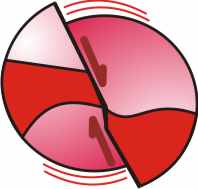 The main objective of the project will be the implementation of empirical relationships between the ESI-2007 Intensity and other source parameters. A systematic revision, mapping and classification of worldwide contemporary, historical and paleoseismic EEE data is necessary, continuing with the updating and cataloguing of strong historic and instrumental earthquakes associated with effects in the natural environment developed during the inter-congress period 2007-2011. The importance of the Earthquake Environmental Effects (EEE) in seismic hazard assessment had been clearly illustrated by the recent strong damaging events such as 2010 Chile (Mw 9.1) and 2011 Japan (Mw 9.0), but also for moderate events like the 2009 L’Aquila (Mw 6.3), 2010 Haiti (Mw 7.0), 2011 Christchurch (Mw 6.2), 2011 Lorca (Mw 5.1) and 2012 Emilia-Romana (Mw 6.0). On all these events EEE’s were the source of most of the destruction: tsunamis, liquefaction, surface faulting, and landslides were the most damaging environmental coseismic processes. Also in most of these events geological record of previous damaging earthquakes and related active faults were available, but not properly included in the running seismic hazard analyses, including those related to critical facilities such as NPP (i.e. Fuskushima). In fact, the completion and updating the data-base of the EEE catalogue will be a running task during the project time-life, expected to be strongly enlarged. To the end of this first year project (2012) a number of 100 earthquakes are included in the EEE Catalogue (83 events visible on the public page) including also on-field checked data, for recent and future events. Catalogued events will deserve as the initial data to develop the parametrization of EEE. This data base will be also upgraded during this project in order to join the criteria to be linked to the IAEA-ISSC (International Seismic Safety Center) data-bases. During the project development special attention will be focused on several tasks in order to refine and upgrade the ESI-2007 Scale.
The main objective of the project will be the implementation of empirical relationships between the ESI-2007 Intensity and other source parameters. A systematic revision, mapping and classification of worldwide contemporary, historical and paleoseismic EEE data is necessary, continuing with the updating and cataloguing of strong historic and instrumental earthquakes associated with effects in the natural environment developed during the inter-congress period 2007-2011. The importance of the Earthquake Environmental Effects (EEE) in seismic hazard assessment had been clearly illustrated by the recent strong damaging events such as 2010 Chile (Mw 9.1) and 2011 Japan (Mw 9.0), but also for moderate events like the 2009 L’Aquila (Mw 6.3), 2010 Haiti (Mw 7.0), 2011 Christchurch (Mw 6.2), 2011 Lorca (Mw 5.1) and 2012 Emilia-Romana (Mw 6.0). On all these events EEE’s were the source of most of the destruction: tsunamis, liquefaction, surface faulting, and landslides were the most damaging environmental coseismic processes. Also in most of these events geological record of previous damaging earthquakes and related active faults were available, but not properly included in the running seismic hazard analyses, including those related to critical facilities such as NPP (i.e. Fuskushima). In fact, the completion and updating the data-base of the EEE catalogue will be a running task during the project time-life, expected to be strongly enlarged. To the end of this first year project (2012) a number of 100 earthquakes are included in the EEE Catalogue (83 events visible on the public page) including also on-field checked data, for recent and future events. Catalogued events will deserve as the initial data to develop the parametrization of EEE. This data base will be also upgraded during this project in order to join the criteria to be linked to the IAEA-ISSC (International Seismic Safety Center) data-bases. During the project development special attention will be focused on several tasks in order to refine and upgrade the ESI-2007 Scale.
 EEE Catalogue (2012-2015): This task will be a follow-up of the last INQUA Project developed during the last intercongress period (2007-2011). The compilation of the EEE Catalogue is one of the main tasks of the Focus Area needing the continuous updating and feedback from researchers involved in paleoseismic research. The incorporation of new EEE effects from different historical, ancient and palaeoearthquakes will help to refine the ESI-2007 data and to promote a global view of past earthquakes. Also we will strongly promote the incorporation to the catalogue data of recent strong and moderate earthquakes in order to check, validate and upgrade the presently set of geological criteria collected within the ESI-2007, especially for the upper and lower bounds of the present scale. Instrumental records of recent damaging events will be essential to explore numerical relationships to be applied to historical and paleo-earthquakes. Gathering earthquake information for different regions, tectonic settings and at individual active structures in different time-windows will be also essential for the proper incorporation of numerical results on future seismic hazard analyses.
The EEE Catalogue is hosted at ISPRA. EEE data will be implemented from remote through a EEE Longin data page. In the frame of collaboration between the Focus Area and the IAEA ISSC (International Seismic Safety Center) the EEE Catalogue will be restructured into a new database in agreement with IAEA needs and linked to the IAEA-ISSC Database for use and dissemination to the worldwide nuclear engineering community. The implementation of the EEE Catalogue will continue also in the remaining intercongress period (up to 2015).
EEE Catalogue (2012-2015): This task will be a follow-up of the last INQUA Project developed during the last intercongress period (2007-2011). The compilation of the EEE Catalogue is one of the main tasks of the Focus Area needing the continuous updating and feedback from researchers involved in paleoseismic research. The incorporation of new EEE effects from different historical, ancient and palaeoearthquakes will help to refine the ESI-2007 data and to promote a global view of past earthquakes. Also we will strongly promote the incorporation to the catalogue data of recent strong and moderate earthquakes in order to check, validate and upgrade the presently set of geological criteria collected within the ESI-2007, especially for the upper and lower bounds of the present scale. Instrumental records of recent damaging events will be essential to explore numerical relationships to be applied to historical and paleo-earthquakes. Gathering earthquake information for different regions, tectonic settings and at individual active structures in different time-windows will be also essential for the proper incorporation of numerical results on future seismic hazard analyses.
The EEE Catalogue is hosted at ISPRA. EEE data will be implemented from remote through a EEE Longin data page. In the frame of collaboration between the Focus Area and the IAEA ISSC (International Seismic Safety Center) the EEE Catalogue will be restructured into a new database in agreement with IAEA needs and linked to the IAEA-ISSC Database for use and dissemination to the worldwide nuclear engineering community. The implementation of the EEE Catalogue will continue also in the remaining intercongress period (up to 2015).
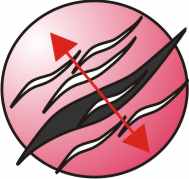 EEE Empirical Relationships with earthquake and fault parameters (2013-2015): This task will be supported by the data base implemented in the EEE Catalogue and will constitute the main objective of the proposed project. The final purpose will be the implementation of empirical relationships between the ESI-2007 Intensity and other source parameters. Well known historic and recent instrumental earthquakes earthquakes selected from the EEE Catalogue will provide necessary data to the development of reliable empirical relationships, but also to the analysis of the lower bound of the ESI-2007 Scale for intensities VI-VII, where environmental coseismic effects are normally related to near-field off-fault effects, commonly hard to evaluate from the geological record and poorly diagnostic for the assessment of ESI Intensity values. We expect to launch the first empirical approaches to the end of the year 2013, but this task will be running until the end of the intercongress period (2015).
EEE Empirical Relationships with earthquake and fault parameters (2013-2015): This task will be supported by the data base implemented in the EEE Catalogue and will constitute the main objective of the proposed project. The final purpose will be the implementation of empirical relationships between the ESI-2007 Intensity and other source parameters. Well known historic and recent instrumental earthquakes earthquakes selected from the EEE Catalogue will provide necessary data to the development of reliable empirical relationships, but also to the analysis of the lower bound of the ESI-2007 Scale for intensities VI-VII, where environmental coseismic effects are normally related to near-field off-fault effects, commonly hard to evaluate from the geological record and poorly diagnostic for the assessment of ESI Intensity values. We expect to launch the first empirical approaches to the end of the year 2013, but this task will be running until the end of the intercongress period (2015).
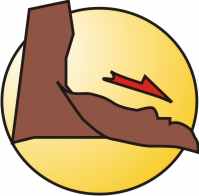 On-Fault paleoearthquake records, fault geomorphology and dating. This task will be supported by some of the data base implemented in the EEE Catalogue, but also by new research on on-fault trenching and fault geomorphological analyses. Fault-trenching data updating in the EEE catalogue of will help to the updating of the knowledge on fault rupture length/fault offset relationships for different styles of faulting on a variety of settings including bedrock fault scarps. The increasing data from cosmogenic analyses of bedrock fault scarps developed in limestones from the Mediterranean Region suppose a new emergent tool in the field of paleoseismology in order to understand and refine the knowledge of this particular type of active faults. On the other hand faulted alluvial soils in open-trenches are normally widely assumed as represent ancient ground-surfaces, but a detailed analysis of soil-horizons is necessary to identify true ancient ground surfaces. The micro and macro morphological analysis of soils will provide criteria in order to discern the type of soil horizon and the probably thickness of the overlying eroded ones in order to put constrains to bracketed estimated true ground surface offsets.
On-Fault paleoearthquake records, fault geomorphology and dating. This task will be supported by some of the data base implemented in the EEE Catalogue, but also by new research on on-fault trenching and fault geomorphological analyses. Fault-trenching data updating in the EEE catalogue of will help to the updating of the knowledge on fault rupture length/fault offset relationships for different styles of faulting on a variety of settings including bedrock fault scarps. The increasing data from cosmogenic analyses of bedrock fault scarps developed in limestones from the Mediterranean Region suppose a new emergent tool in the field of paleoseismology in order to understand and refine the knowledge of this particular type of active faults. On the other hand faulted alluvial soils in open-trenches are normally widely assumed as represent ancient ground-surfaces, but a detailed analysis of soil-horizons is necessary to identify true ancient ground surfaces. The micro and macro morphological analysis of soils will provide criteria in order to discern the type of soil horizon and the probably thickness of the overlying eroded ones in order to put constrains to bracketed estimated true ground surface offsets.
 Earthquake Archaeological Effects (EAE). The main purpose of this activity is to explore the capacities of Earthquake Archaeological Effects (EAE) to be improved and converted in an individual but complementary tool for the investigation of ancient or poorly-known historic earthquakes. Research on EAE will be focused in the evaluation of directivity effects in order to probe seismic damage and more probable ground shacking directivity in order to identify probable causative seismic sources. This activity also contemplate the use of new investigation imaging techniques (Georadar, Geoelectrical surveys, Lidar scans) in order to generate digital models for the identification and quantification of deformation, as well as the further development of theoretical models.
Earthquake Archaeological Effects (EAE). The main purpose of this activity is to explore the capacities of Earthquake Archaeological Effects (EAE) to be improved and converted in an individual but complementary tool for the investigation of ancient or poorly-known historic earthquakes. Research on EAE will be focused in the evaluation of directivity effects in order to probe seismic damage and more probable ground shacking directivity in order to identify probable causative seismic sources. This activity also contemplate the use of new investigation imaging techniques (Georadar, Geoelectrical surveys, Lidar scans) in order to generate digital models for the identification and quantification of deformation, as well as the further development of theoretical models.
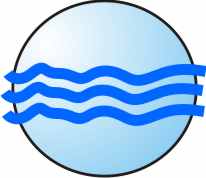 Tsunami and Paleo-tsunami records. After the devastating earthquake-tsunami event of Japan (2011) the paleoseismological community needs of reliable constrains in order to estimate the intensity of former tsunami events from the geological record. This objective will accomplish specific quantification of tsunamites and tsunami littoral geo-records to be incorporated as an individually defined item in the ESI-2007.
Tsunami and Paleo-tsunami records. After the devastating earthquake-tsunami event of Japan (2011) the paleoseismological community needs of reliable constrains in order to estimate the intensity of former tsunami events from the geological record. This objective will accomplish specific quantification of tsunamites and tsunami littoral geo-records to be incorporated as an individually defined item in the ESI-2007.
Tasks and members of the Working Groups
Luca Guerrieri (Italy)
luca.guerrieri@isprambiente.it
Franck Audemard (Venezuela)
faudemard@funvisis.gob.ve
George Papathanassiou (Greece)
gpapatha@auth.gr
Valerio Comerci (Italy)
v.comerci@isprambiente.it
Sabina Porfido (Italy)
sabina.porfido@iamc.cnr.it
Alessandro Maria Michetti (italy)
michetti@fis.unico.it
Ana Maria Blumetti (Italy)
annamaria.blumetti@isprambiente.it
EEE Empirical Relationships with Earthquake parametres
Salvatore Barba (Italy)
salvatore.barba@ingv.it
Stéphane Baize, (France)
stephane.baize@irsn.fr
Ruben Tatevossian (Russia)
ruben@mail.ifz.ru
Akashi Tazuma (Japan)
t-azuma@aist.go.jp
Pablo G. Silva (Spain)
pgsilva@usal.es
On-Fault paleoearthquake records, Geomorphology and Dating
Geralds Roberts (UK)
gerald.roberts@ucl.ac.uk
Victor Hugo Garduño-Monroy (Mexico)
vgmonroy@umich.mx
Jim McCalpin (USA)
mccalpin@geohaz.com
Daniela Pantosti (Italy)
daniela.pantosti@ingv.it
Ioannis Papanikolaou (Greece)
i.papanikolaou@ucl.ac.uk
Petra Štěpančíková (Czech Rep.)
stepancikova@irsm.cas.cz
Earthquake Archaeological Effects
Klaus Reicherter (Germany)
k.reicherter@nug.rwth-aachen.de
Manuel Sintubin (Belgium)
manuel.sintubin@ees.kuleuven.be
Klaus Hinzen (Germany)
hinzen@uni-koeln.de
Young-Seog Kim (Korea)
ysk7909@pknu.ac.kr
Miguel Ángel Rodríguez Pascua (Spain)
ma.rodriguez@igme.es
Shmulik Marko (Israel)
shmulik@terra.tau.ac.il
Tsunami and Paleotsunami Records
Andreas Vött (Germany)
voett@uni-mainz.de
Javier Lario (Spain)
javier.lario@ccia.uned.es
Beverly Goodman (Israel)
goodmanbeverly@gmail.com
Meskouris, Konstantin (Germany)
meskouris@lbb.rwth-aachen.de
Main links
 EEE - Earthquake Environmental Effects Catalogue
EEE - Earthquake Environmental Effects Catalogue
 INQUA Commission on Terrestrial Processes, Deposits, and History (TERPRO)
INQUA Commission on Terrestrial Processes, Deposits, and History (TERPRO)
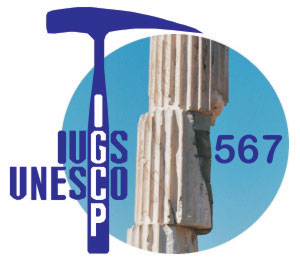 IGCP 567: Earthquake Archaeology
IGCP 567: Earthquake Archaeology
 The online community for paleoseismicity, neotectonics, earthquake geology and archeoseismology
The online community for paleoseismicity, neotectonics, earthquake geology and archeoseismology
 EEE Catalogue Web Login Page
EEE Catalogue Web Login Page USGS Paleoseismology
USGS Paleoseismology